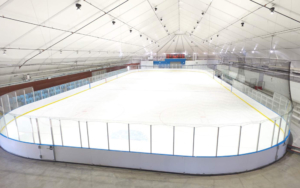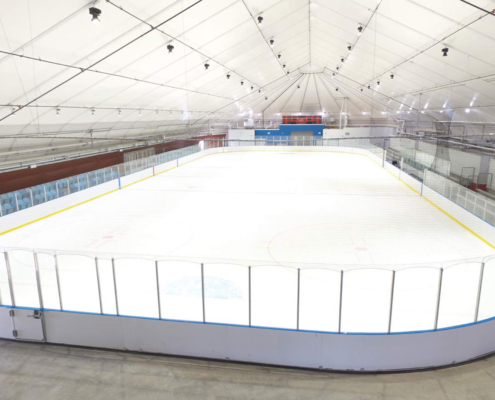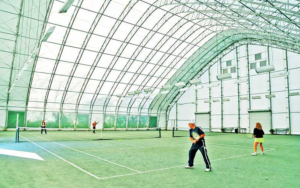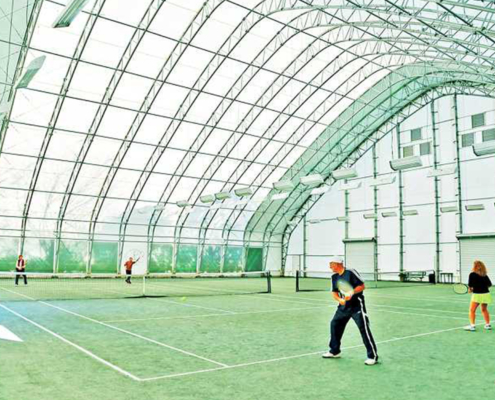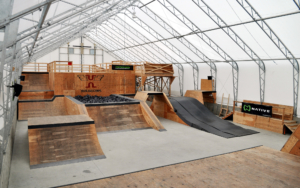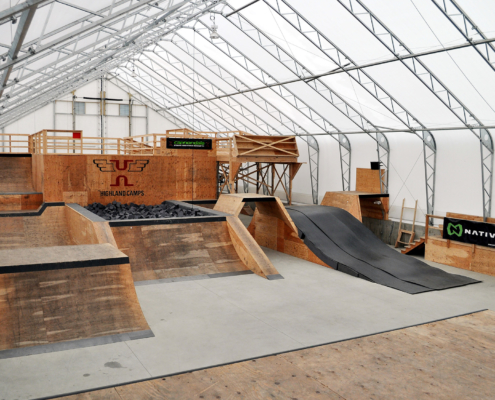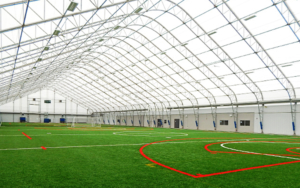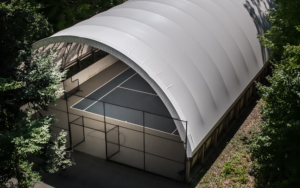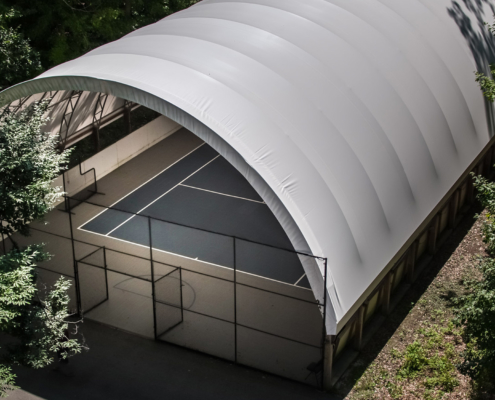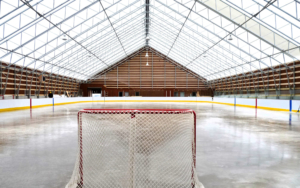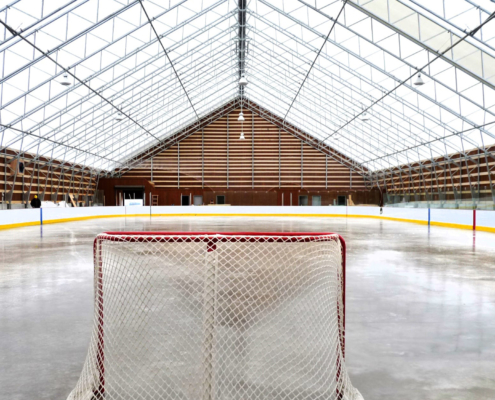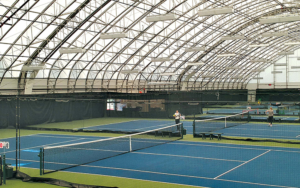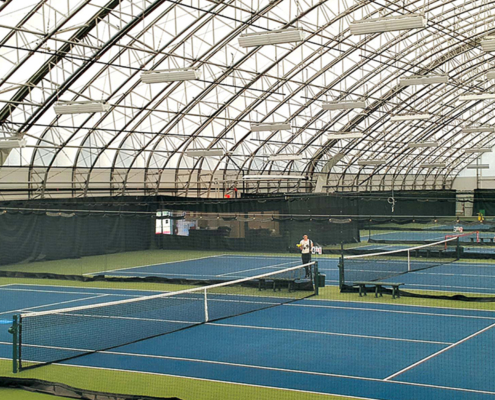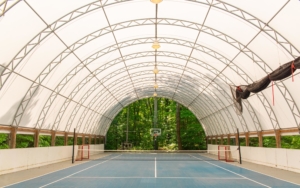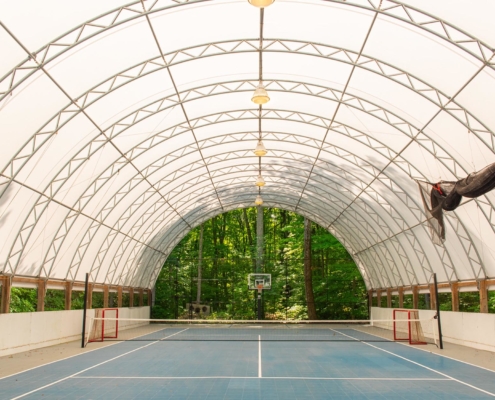Five Innovative Ways Fabric Buildings Are Used in Urban Development
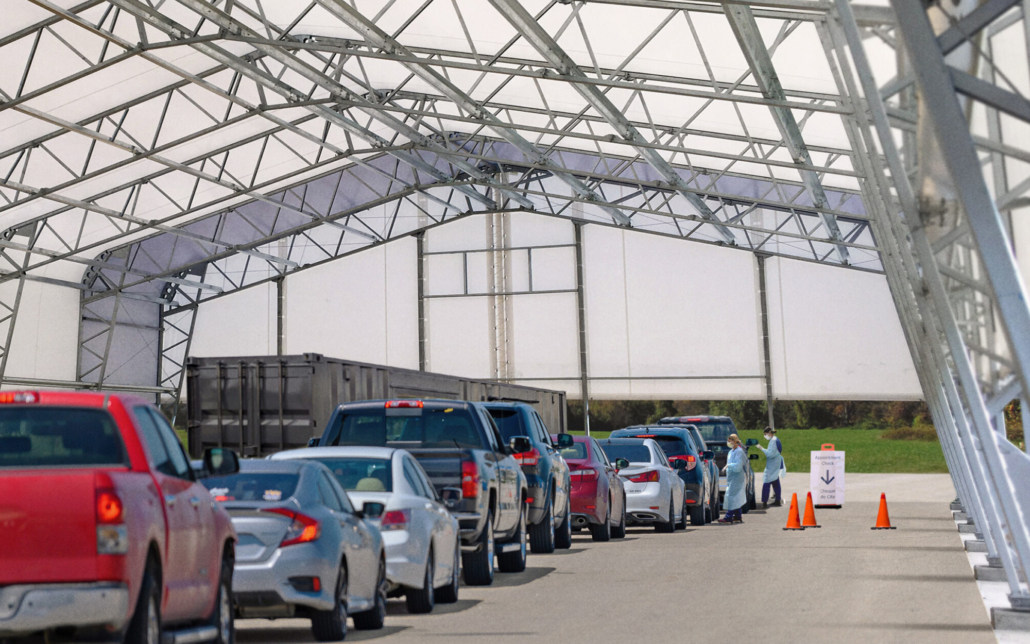
Urban development constantly demands innovative, flexible, and sustainable construction solutions. Urban fabric buildings, with their versatility and efficiency, are increasingly becoming a fixture in cityscapes for a variety of applications.
From public health facilities to vibrant community hubs, discover how Edge Inc.’s semi-permanent fabric structures are reshaping urban landscapes. Renowned for their rapid deployment and exceptional adaptability, our custom fabric solutions meet a broad spectrum of urban demands, providing resilient, efficient, and versatile spaces tailored to the unique challenges of city development
How are custom fabric structures used in urban settings?
Fabric structures are increasingly becoming a crucial part of urban development, praised for their efficiency and energy-saving qualities. Here are five ways custom fabric structures are popping up in our towns and cities.
1. Road Work Enclosures
Quick-deploy shelters provide essential cover for machinery and active construction sites along urban roads. These versatile structures also serve as convenient storage for aggregates like gravel and salt, which are frequently used in road maintenance.
Benefits: These enclosures not only reduce downtime by shielding operations from adverse weather, thereby enhancing onsite safety and worker comfort, but their ease of assembly and disassembly supports the fluid nature of road work.
Keeping these materials close to the site not only enhances efficiency, reducing logistical overheads, but also significantly reduces transportation costs.

2. Emergency Services Vehicle Housing
Fabric structures provide a vital resource for emergency services, particularly for housing vehicles such as fire trucks and ambulances. These structures can be quickly erected to form dependable, weather-resistant garages, crucial for maintaining the readiness and efficacy of emergency response units.
Their spacious interiors allow for the accommodation of large vehicles and essential emergency equipment, streamlining operations and ensuring rapid deployment during crises.
Benefits: Fabric buildings are not only rapidly deployable but also offer customizable layouts to optimize space usage and access. The durability and robust protection ensure that critical services remain uninterrupted, regardless of external weather conditions. This capability is indispensable for emergency operations, where time and reliability are paramount.
The adaptability of these structures also means they can be relocated or repurposed as operational demands evolve, providing a sustainable solution for emergency services infrastructure.
3. Sports and Recreational Facilities
Fabric structures are becoming popular solutions for sports and recreational facilities within urban environments. These buildings can be customized to house indoor sports arenas, swimming pools, and gymnasiums, offering communities year-round access to sports facilities regardless of weather conditions.
Benefits: The clear span interiors provide unobstructed space necessary for sports activities while the translucency of the material ensures natural lighting, enhancing the playing environment.
Additionally, their quick construction and dismantling capabilities allow for temporary event installations like seasonal ice rinks or sports tournaments.
4. Flexible Office Spaces
Semi-permanent fabric structures are increasingly popular as temporary or transitional office spaces, especially in urban areas where conventional building is limited by space, time, or budget constraints. These adaptable structures can be quickly erected to serve as fully functional offices for construction sites, seasonal use, or interim corporate hubs as permanent facilities are developed.
Benefits: Beyond their cost-effectiveness, fabric offices are highly customizable, able to incorporate insulation, HVAC systems, and sophisticated electrical setups. This flexibility makes them suitable for both short bursts and prolonged use without sacrificing comfort or functionality. They provide an ideal balance of practicality and comfort, fostering a productive workspace that can be relocated or reconfigured as project demands shift. This adaptability is key in rapidly changing urban landscapes, ensuring that businesses can continue operations smoothly with minimal disruption.
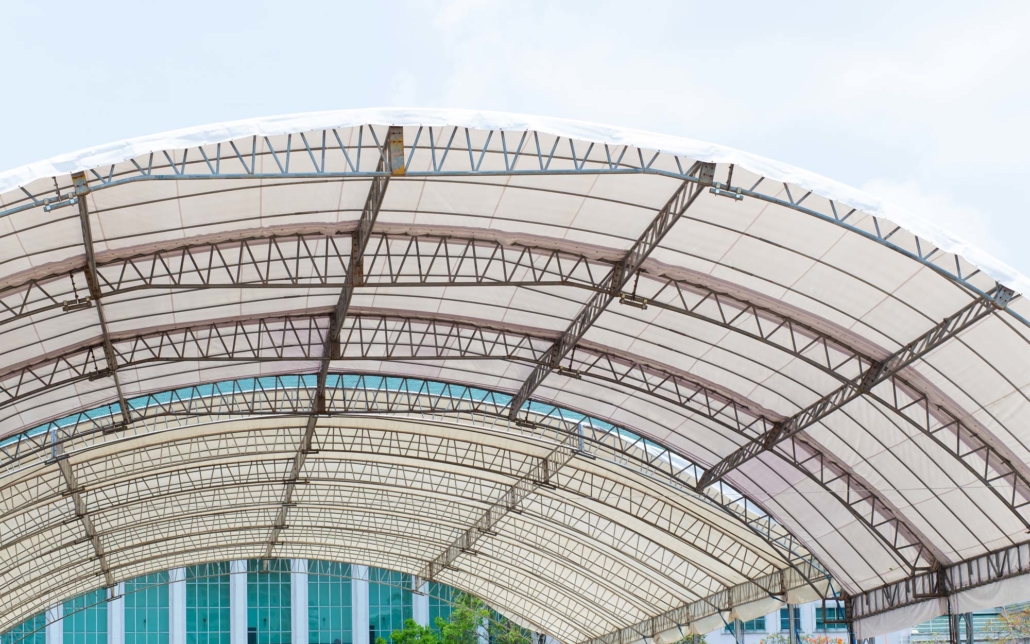
5. Community Centers and Markets
Fabric structures are perfectly suited for fostering vibrant community hubs such as artisan and local markets, which thrive in urban settings due to high footfall and convenience. In cities where space can be at a premium, these structures offer an adaptable and scalable venue solution that can accommodate a range of events from local market days to large cultural festivals.
Benefits: These buildings can be crafted to create expansive, airy environments that welcome community interaction, adapting seamlessly to changes in weather, ensuring they are comfortable regardless of the season. Beyond markets, these versatile structures are also ideal for hosting exhibitions, art galleries, and trade shows, making them a cornerstone for community and cultural development in urban areas.
Are fabric buildings more sustainable?
Urban fabric buildings excel not just in functionality but also in sustainability. The use of translucent materials maximizes natural lighting, significantly reducing energy consumption.
In addition, the materials used are typically recyclable, supporting urban initiatives aimed at reducing environmental footprints. These buildings provide robust, weather-resistant solutions that blend seamlessly with urban infrastructure demands.
Fabric buildings are reshaping urban development by providing dynamic, efficient, and sustainable solutions for complex city projects. From enhancing public service efficiency to fostering community engagement, these structures prove indispensable.
As urban areas continue to grow and change, the adaptability and minimal environmental impact of fabric buildings make them ideal for future developments.
Ready to Transform Your Urban Space?
Contact us for a personalized consultation. Our team is ready to help you integrate fabric buildings into your next urban project, ensuring you achieve efficiency, sustainability, and success.
